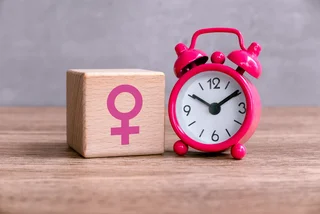Infertility has become an increasingly common problem for couples around the world. From delayed maternal age to environmental factors and lifestyles, several issues can impact a woman’s ability to conceive. In the Czech Republic, infertility affects 20 percent of couples, many of which are turning to assisted reproduction.
What does assisted reproduction look like in the Czech Republic? Dr. Kateřina Veselá, M.D., director of Repromeda reproductive clinic, explains the process step by step.
An initial consultation
During their first visit to the clinic, the couple will have a consultation with the doctor, which lasts about 45 minutes. Each couple may have a different combination of causes and factors of infertility, and therefore the treatment and testing procedures will also vary from couple to couple.
Every woman will undergo a small pelvic ultrasound and gynecological examination, female sex hormone and thyroid hormone testing, STD testing, immunological testing, and, when indicated, fallopian tube patency testing and hysteroscopy.
The examination of the man is always based on sperm analysis. As in the case of women, basic clinical and laboratory examinations are performed, on the basis of which the individual recommendations for treatment and any further examinations are made.
Genetic testing
Both partners also undergo genetic testing and consultation with a clinical geneticist. "The genetic consultation is an interview during which the causes of the fertility disorders are assessed from a genetic point of view, the health risks for the couple's children and the health status of family members are determined,” explains Dr. Veselá.
The basic genetic examination that every couple undergoes at Repromeda is karyotyping – that is, measuring the couple’s chromosomal set.
Hormonal stimulation
Hormonal stimulation causes a higher number of eggs to mature than in a normal cycle. “The application is painless and simple, there is nothing to be afraid of. A special pen is used to inject into the subcutaneous tissue in the lower abdomen. A nurse helps women with the first injection, after that they are able to do everything themselves,” says Veselá.
Egg retrieval
Egg retrieval takes place on an empty stomach under general anesthesia and usually takes no longer than 10 minutes. Veselá says: “The contents of the follicles are removed by a doctor under ultrasound control, using a thin puncture needle. Embryologists in the laboratory then search for eggs in the follicular fluid. On the same day, the oocytes are then fertilized and embryos are formed.”
Embryo transfer
The embryo is transferred with a thin needle through the cervix into the uterus. It is a completely painless procedure during which enjoyable relaxing music is played. “We know from experience that implanting multiple embryos does not increase the likelihood of pregnancy. We try to prevent several complications associated with multiple pregnancies,” adds IVF specialist Veselá.
This procedure can also be covered upon agreement with health insurance companies. If one embryo is transferred in the first two cycles, the patient is entitled to a total of 4 IVF cycles. However, if multiple embryos are transferred, the woman is only entitled to 3 reimbursed IVF cycles.












 Reading time: 2 minutes
Reading time: 2 minutes 





















